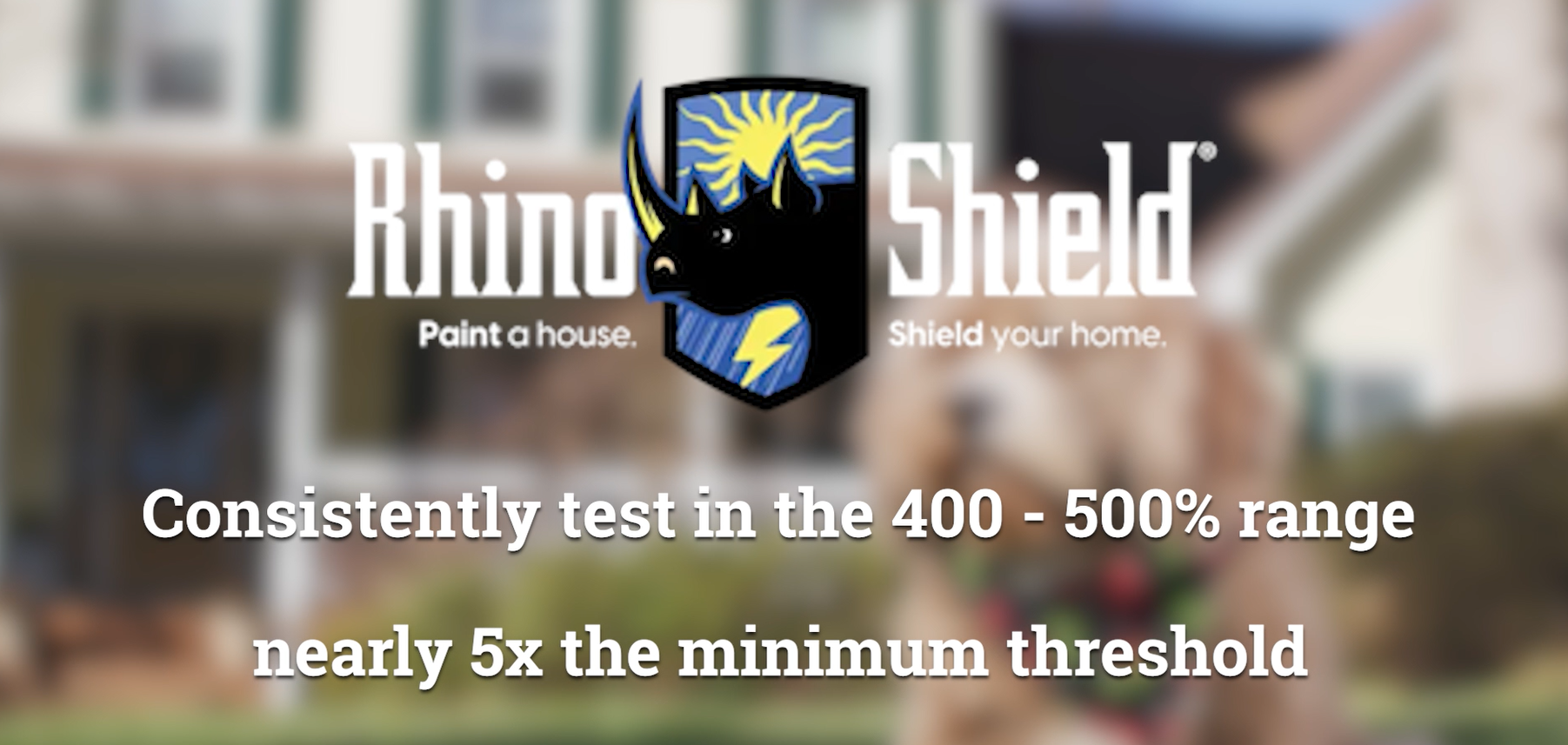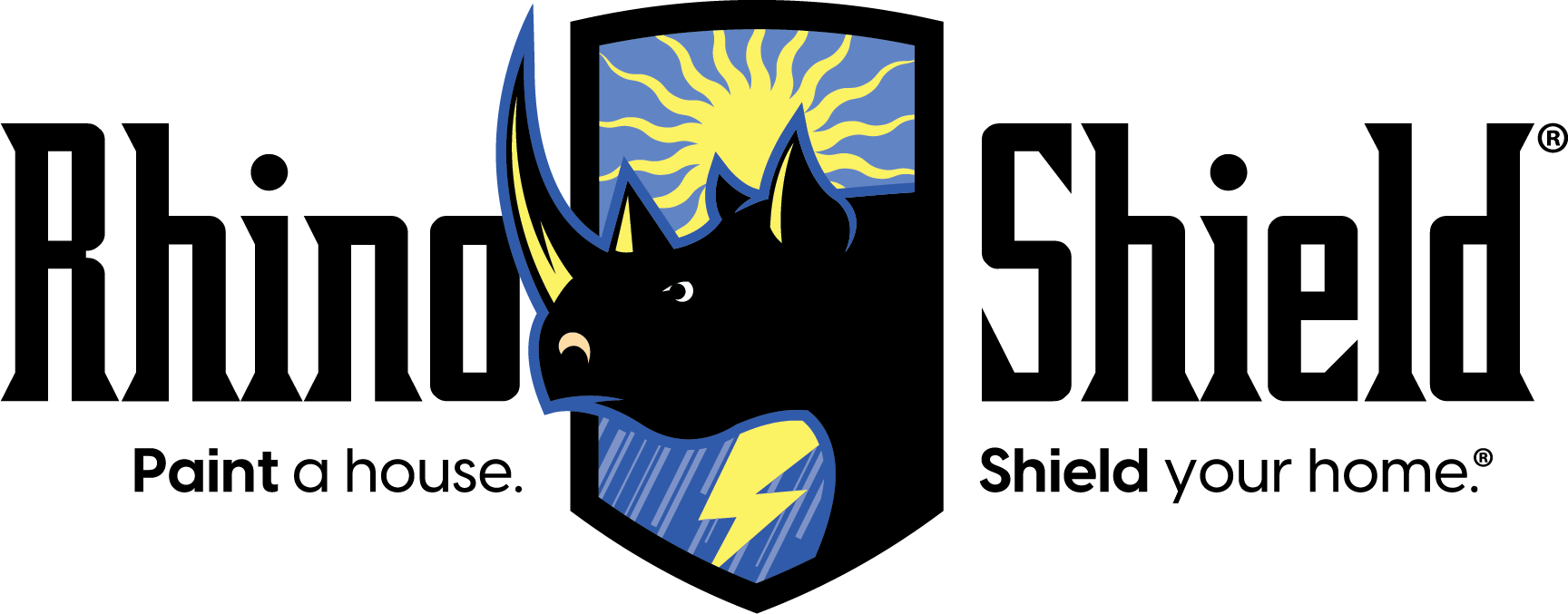The 4 Most Important Aspects of an Exterior Coating and How They Are Tested
February 15th, 2024 | 5 min. read
By admin

When it comes to protecting your home's exterior, the choices can be overwhelming. Marketers often make bold claims about their products, but how can you separate fact from fiction? The key lies in independent, third-party lab tests that provide tangible data supporting the claims.
Here at Rhino Shield, we coat thousands of homes every year, and are often asked, “How exactly is Rhino Shield more protective than regular paint?” and “How is it longer lasting?”
We’ll answer these questions honestly so that even if Rhino Shield isn’t for you, you’ll be educated on the top 4 things you need to ask about from the exterior coating provider you are considering. This will help you avoid common problems other homeowners have had in the past with constant repainting and coatings that start peeling off the very next year after application.
Always ask your coating provider for testing data to ensure the product they are applying is quality. Your home is the biggest investment you’ll ever make. It deserves all the consideration in the world.
1. Adhesion: The Foundation of Durability
The fundamental question when applying any coating to your home is, "How well does this paint stick to the surface?" We call this adhesion. At Rhino Shield, we conduct independent, third-party lab tests to evaluate our product on various materials, including:
- Vinyl siding
- Metal
- Stucco
- Brick
- Wood
- And more
Whether it’s stucco or wood, we measure every material with a pull test. This test measures how much psi (pounds per square inch) it takes to pull our product off the substrate. The Rhino Shield system tests as high as 709 PSI, which is a very strong bond. Often, the coating system is stronger than the substrate and the material itself pulls apart with the coating still attached.
Many things will affect adhesion. The two most important aspects in optimizing adhesion are product formulation and how well the surface is prepared. If you don’t properly clean and prepare the surface, the coating won’t achieve the ideal bond. Preparations include sterilizing the surface all the way to the spore level, otherwise, any remaining biogrowth will eventually come back through the paint. Other steps can include:
- Removing existing paint
- Sanding
- Imparting a surface profile
- Repairing damaged or rotted areas.
If your home’s condition is not in good shape—like rotting wood from moisture damage—no coating is going to properly stick unless you replace that wood. This is why we at Rhino Shield always recommend going with certified installers who are professionally trained to put a brand-new coating on your home. They should have the skills to not only properly clean your home’s exterior but also make necessary repairs.
2. Elongation: Flexibility for Varied Climates
Elongation addresses the question of how much a product can stretch, a critical factor in climates with extreme temperature fluctuations. As one of our customers—Rick Krall—put it in his testimonial, “In Michigan, it gets really hot in the summer and really cold in the winter.” These extreme weather fluctuations cause the expansion and contraction of almost every material your house can be built from. You want paint that is flexible enough to seamlessly move with this expansion and contraction to prevent it from flaking and chipping.
The same reasoning can be applied to the natural settling of your house. When a coating flakes because the painting can’t stretch with it, you allow numerous elements—such as rain—to invade your paint and compromise the adhesion of the coating, which can lead to peeling.
The thickness of the product is also crucial for elongation. If you have a typical 1-2 mil thick house paint, the capacity for its ability to stretch is very limited simply because there’s not enough product. But with Rhino Shield, we apply at minimum 8 – 10 dry mils of thickness, which gives it more volume to flex.
Elongation is measured as a percentage. A lab will use a machine to pull the coating and take note of how much the coating can flex. The industry considers a coating elastomeric if it has 100% flexibility. Rhino Shield stretches up to 495%—far more than what is required for the elastomeric classification.
Importantly, Rhino Shield was also tested after our coating was aged using accelerated aging chambers. This was conducted to ensure that Rhino Shield maintains its flexible properties year after year.
3. Tensile Strength: Thicker Coating, Greater Durability
Tensile strength relates to how tough your coating is, or how much force it takes to damage/break it. Your coating will receive abuse besides just wind-driven rain, like:
- Hail
- Getting banged by packages.
- Limbs falling from your tree.
- Kids hitting baseballs at it.
- Much more
Most traditional paints have a formulation of 60% water. During the paint-drying process, all this water content evaporates over time, leaving a thin layer of paint on your home.
In contrast, Rhino Shield, with 79% solids and only 21% water, dries into a super thick coating. The philosophy is simple: the thicker the coating, the more durable it is. To illustrate, imagine trying to break a 1-inch-thick wooden board compared to a 10-inch thick one. The same principle applies to exterior coatings—the thicker, the more durable. Rhino Shield's composition ensures a lasting and robust protective layer for your home.
The tensile strength of a product is measured by how much psi it takes to pull apart the coating. Our Rhino Shield system tests an average of over 200 psi—an extremely high number in the industry.
Some flexible coatings lack high tensile strength. Rhino Shield boasts a good blend of both.
4. Permeability: Keeping Your Home Breathable
When it comes to moisture, exterior paint should serve a dual purpose: keeping outside water from getting in and allowing water vapors from inside your home to escape.
Every house in every region gets rained on, and every house accumulates water vapor from cooking pots and showers. Rhino Shield keeps the rain out yet allows moisture vapors to escape. This is important becomes homes accumulate humidity and moisture vapor. Normal household activity creates moisture vapor, including:
- Cooking
- Hot showers
- Even breathing
If the humidity cannot escape and becomes trapped, it can lead to wood rot, peeling paint, mold, and an overall unhealthy home. Rhino Shield is breathable and allows normal water vapors from inside the home to pass through, avoiding all these issues.
Every house/building has an envelope of breathability, your paint should be no different. Since water vapor molecules are smaller than water droplet molecules, a well-formulated coating will allow vapor to pass, yet keep out liquid water in the form of wind-driven rain.
In coastal areas, it is imperative to ensure that whatever coating you put on your house passes the Federal Wind-Driven Rain Code. This is a test that an independent, third-party lab will conduct to ensure wind-driven rain does not penetrate the coating. The test involves applying the coating system on a concrete block. Then, a jet of water is shot at the block at 98 miles an hour, which is equivalent to a category 2 hurricane. The lab continues to water blast the block for 24 hours and records the result thereafter.
The result looks at two aspects:
- Did any moisture get past the coating? If the answer is yes, the product will fail the test.
- The next is the moisture absorption rate. The lower it is, the better. For Rhino Shield’s absorption rate, we scored less than one-half of 1%, which is a minuscule amount of absorption.
On the ASTM test for breathability, building materials that score between 5 and 9 US perms are classified as semi-permeable. Materials that score a 10 or higher are generally considered fully permeable. Rhino Shield’s permeance ratings for all our different coating systems range between 13.16 and 17.
Conclusion
When considering an exterior coating for your home, we at Rhino Shield advise prioritizing the testing data from independent, third-party labs. The most important categories to evaluate are:
- Adhesion
- Elongation
- Tensile strength
- Permeability
We recommend shopping for coatings that rate well on all four aspects. This provides the best chance of avoiding problems and gives you a long service life. Your home is a significant investment deserving of the best protection, and taking the time to go through the testing data ensures you make an informed decision.
If you’re interested in what Rhino Shield can do for your home, you can fill out the free, no-obligation quote request below.

